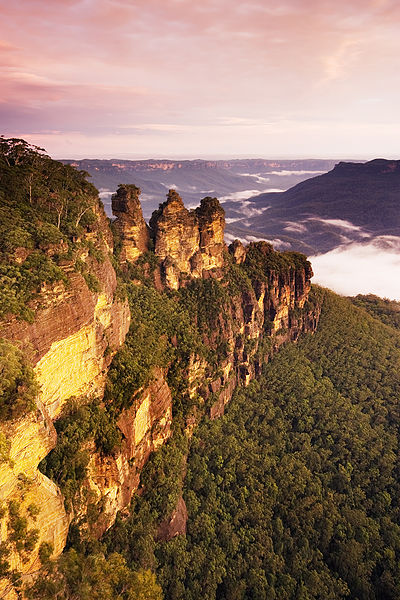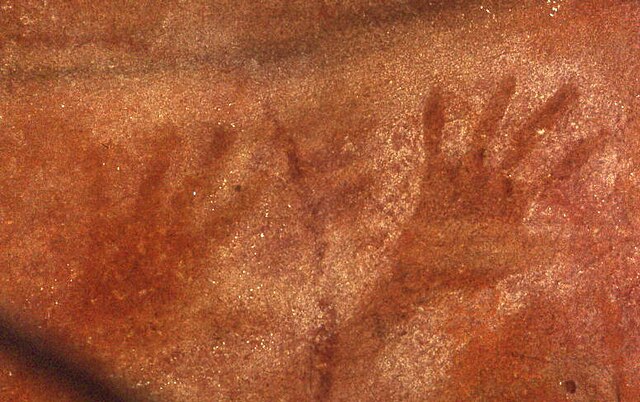Greater Blue Mountains Area
The Greater Blue Mountains Area is a World Heritage Site located in the Blue Mountains of New South Wales, Australia. The 1,032,649-hectare (2,551,730-acre) area was placed on the World Heritage List at the 24th Session of the World Heritage Committee, held in Cairns in 2000.
A view over Jamison Valley, in 2008.
Lake Burragorang
Kanangra Walls at Kanangra-Boyd National Park
Forest near Boyd River
Blue Mountains (New South Wales)
The Blue Mountains are a mountainous region and a mountain range located in New South Wales, Australia. The region is considered to be part of the western outskirts of the Greater Sydney area. The region borders on Sydney's main metropolitan area, its foothills starting about 50 kilometres (31 mi) west of centre of the state capital, close to Penrith. The public's understanding of the extent of the Blue Mountains is varied, as it forms only part of an extensive mountainous area associated with the Great Dividing Range. As defined in 1970, the Blue Mountains region is bounded by the Nepean and Hawkesbury rivers in the east, the Coxs River and Lake Burragorang to the west and south, and the Wolgan and Colo rivers to the north. Geologically, it is situated in the central parts of the Sydney Basin.
The Three Sisters sandstone rock formation, one of the region's best-known attractions
The characteristic blue haze, as seen in the Jamison Valley
Aboriginal hand stencils in Red Hands Cave, near Glenbrook
Broken china from ruins near Asgard Swamp, where a coal mine was opened in the nineteenth century







